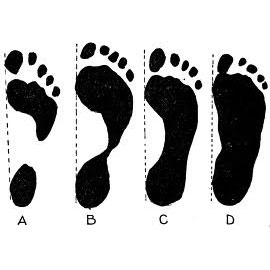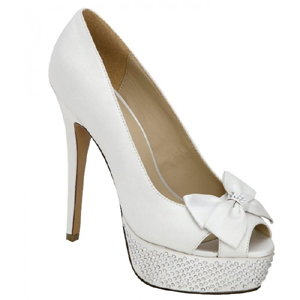Subject: Various “standard” methods to measure heel height
Dear Shoe Lady:
There are at least two. This is not a good thing, as everyone assumes theirs is the “correct” and “standard” method, so customers are left to guess.
Both methods begin by placing the shoe upright on a flat surface, standing a ruler up vertically alongside of it, and then measuring from the flat surface to where the heel is attached to the shoe (visible line on shoes with attached heels). One method places the ruler alongside the shoe at about the middle of the heel, the other places the ruler at the very back of the shoe (at the back seam of a pump). Obviously, the result will be different depending upon where the measurement is taken.
I once thought height was measured from the middle of the heel at the side of the shoe as you describe, until I read that measuring from the back of the shoe is the standard, because that location is easier to find than the middle of the heel. And when I started shopping online, I found that most merchants also measure from the back. But I just received a pair described as having 10cm heels, and found they are “actually” 12cm (as measured from the back). So I started some research, and found not only your article, but that so large a vender as Zappos also measures from the middle of the heel.
Things become more complicated with platform shoes. Most venders state total heel height and platform height as separate numbers, and allow their customers to do the arithmetic and figure out the foot angle. Apparently you publish effective heel height ( = total heel height – platform height)?
Then I saw a tutorial video where the narrator confidently stated that heel height does not include the taps (or tips) at the ends of stiletto heels…
“It’s all math, when you come down to it.”
Actually, it’s all definitions when you come right down to it. And it is becoming obvious that there is no single universally agreed-upon standard in the industry.
“It isn’t what we don’t know that gives us trouble, it’s what we ‘know’ that ain’t so.” – Will Rogers
I think venders need to link explanations of how they reckon heel height to their order pages so their customers will see them. This will save frustration for people like me, and for Vanessa of Tennessee!
Darkmoon
****
Dear Darkmoon,
Where have you been all my life Soul Sister!
You are so right about the vagaries of measurement. Everyone has a slightly different “standard” for measuring and it can result in some significant differences in heel heights.
As for platform shoes, DesignerShoes.com lists the heel height, not the “effective” heel height. But I will tell them, they should make that more clear!
Thanks for your excellent comments. And your appreciation of Will Rogers!
The Shoe Lady
*******
TSL: Where have you been all my life Soul Sister!
😀 {Hugz!}
TSL: You are so right about the vagaries of measurement. Everyone has a slightly different “standard” for measuring and it can result in some significant differences in heel heights.
And significant confusion when shopping for shoes, and coordinating an outfit for the correct height.
TSL: As for platform shoes, DesignerShoes.com lists the heel height, not the “effective” heel height. But I will tell them, they should make that more clear!
Thank you. I took only a quick glance at DesignerShoes.com, but I will have to spend some time browsing. My feet are size 9, and just a bit wide. Finding the fun and unusual styles at prices I can afford is enough of a challenge already without having to worry about whether they will pinch my toes into aching numbness!
TSL: Thanks for your excellent comments.
Oh, you’re welcome. 🙂
And your appreciation of Will Rogers!
OK, now I have to tell my favorite Will Rogers story! For a time, he performed with the Ziegfeld Follies, when Fanny Brice also performed there. One night he stepped out on stage, spinning his lariat and laughing his fool head off. Of course, his audience put up with him for only so long before someone finally shouted out, “All right, give!! What’s so darned funny?!”
“Fanny just told us a joke, backstage. {snort, snicker}”
“Well? What was it? You gonna tell us?!”
“I can’t!”
“Why not?”
“Because it hasn’t come back from the cleaners yet!”
————
Here is a photo of my “10cm” heels that turned out to be 12cm (measured at the back of the shoe). They are made in Italy, and came to me by way of a little shop in Germany. I was planing to send this photo to them, to ask how they measure the heel heights they list on their website.
Ordering from Europe can be something of a challenge, but they have such beautiful and elegant styles there (made in Italy and Spain, mostly), expertly crafted from best quality leathers and offered at ridiculously inexpensive prices for what they are. When I find a great pair, I want to keep them forever, and synthetics do not last that long. And they never really take the shape of my feet the way leather does.
These were the last pair in my size. At 12cm they are not easy to walk in, they pinch my toes (though not as much now that they are breaking in), and that little shop in Germany will never see them back again (except maybe in photographs)! 😀
The Shoe Lady
Cheers! 🙂
Darkmoon (who is also “into” shoes)




